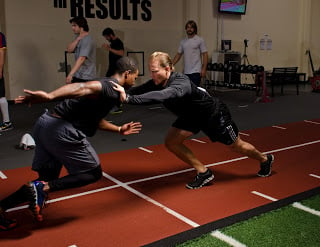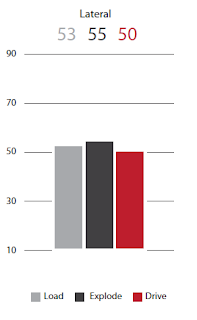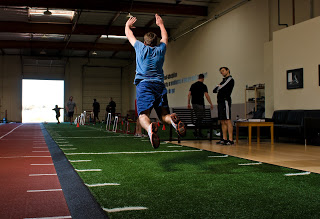
One of the most common misconceptions is that in order to be fast you need to move fast. Entire companies have risen based on this myth. You’ll hear that, “Your feet will get faster if you do more reps on the speed ladder”. Or worse yet is the belief and implementation of over-speed training, where elastic banding attached to the individual, pulls an athlete faster than their normal sprinting speed. Research has disproved both of these attempts to get faster by just training faster. However, studies continue to support the use of slower exercise, such as resistance training, to increase faster tempo movements like sprinting. Perhaps more alarming, is that faster athletes are even more negatively affected by these attempts to move fast in order to BE fast.

Unfortunately, the emphasis on just moving fast in quick feet drills, is also carried over to resistance exercise. Barbell speed is often measured and emphasized with equipment like the Tendo, a wire attached to the end of the barbell to sense how fast it moves. This unit is perceived as a measurement to encourage intensity and focus on the lift. However, your own body-weight’s speed, not a barbell, has the biggest athletic significance since your sport is dictated by how you move your own center of mass.
A May 2012 study confirmed this flaw of measuring barbell velocity because of its distinct difference from moving your own body, the weight was 16.1% faster than your center of mass. These findings demonstrate that judging barbell speed has led to a significant overestimation of the athlete’s speed and power…unless we are all planning on bringing the weighted barbell into the field of play.
So what should you be measuring? Well, it depends on the movement. The goal of strength movements is volume, which is the weight being lifted multiplied by the number of repetitions. Whichever side of the equation you choose to provide this stimulus is nothing new. For decades, weightlifters and athletes have been targeting both ends; the weight (maximal method) or repetitions (repetitive method). On the other hand, barbell speed is just the means to accomplish the volume necessary for strength improvements. The biggest concern is the negative effects that barbell speed emphasis can have on certain Movement Signatures.

These athletes tend to have excessive lordosis, likely from overuse and reliance on hip flexors, such as the psoas and quadriceps musculature, that pull the spine forward to dramatically accentuate the lower back curve. These athletes are therefore often referred to as quad or knee dominant. The spinal positioning has led this group to be at greater risk for hamstring strains, not because of their inflexibility, but rather improper positioning during sprinting.

The solution to increase DRIVE, especially in this “flexed” movement signatureTM is to provide prescriptions whose success requires patience and a longer tempo. Split squats are a great maximal strength movement, as an elevated leg stretches the anterior leg musculature (which pull the hip into the poor position of excessive lordosis) as well as activating the hip extensors such as the gluteus and hamstrings. Broad Jumps are another great addition due to the longer ground contact time and accentuated use of the arms to prolong the movement further.
Our faster athletes with lordosis also just start to feel better when they move with a slower tempo, but I guess that is just a silly additional benefit of not being too quick.
Lake JP, Lauder MA, Smith NA. Barbell Kinematics should not be used to estimate power output applied to the Barbell-and-body system center of mass during lower-body resistance exercise. J Strength Cond Res. 2012 May;26(5):1302-7.